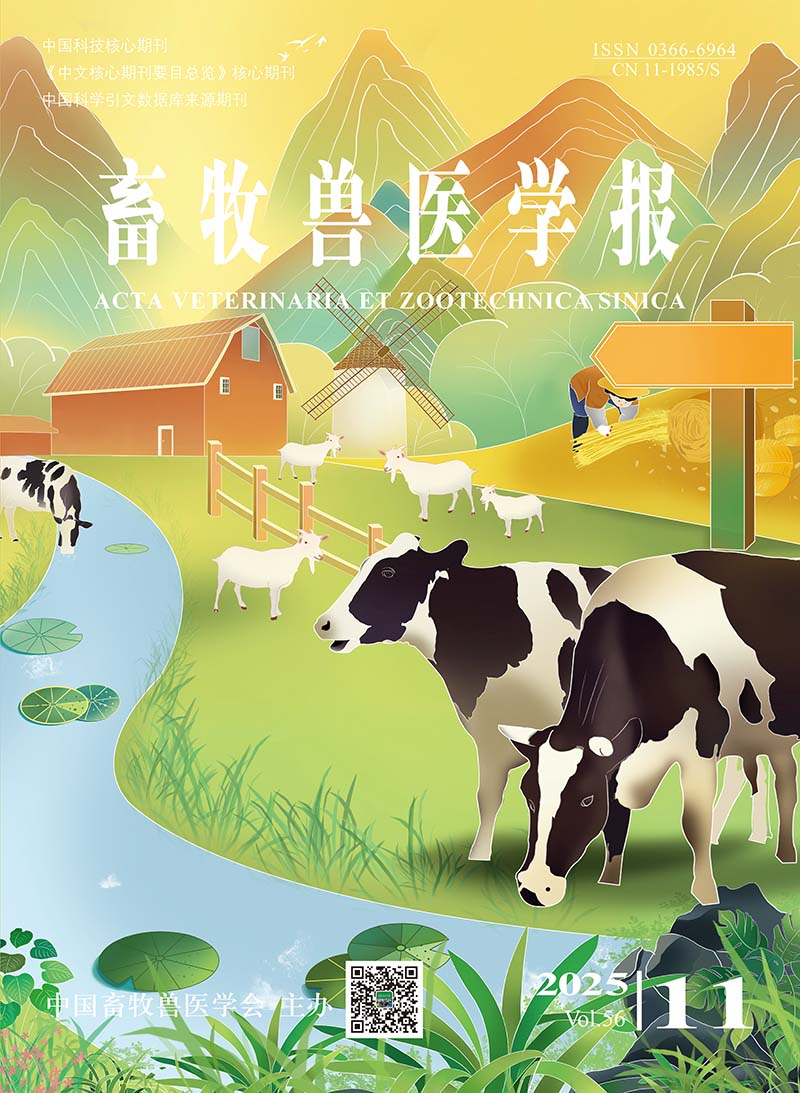-
Sarcopyramis napalensis Wall Extract Improves Hepatic Lipidosis in Mice through Regulating Lipid Metabolism
- WANG Yuewen, CAI Fengying, XUE Kaihang, HUA Baoyu, GUO Chang, LI Yan, QIU Longxin
-
2022, 53(3):
925-937.
doi:10.11843/j.issn.0366-6964.2022.03.025
-
 Abstract
(
313 )
Abstract
(
313 )
 HTML( )
HTML( )
 PDF (6358KB)
(
199
)
PDF (6358KB)
(
199
)
-
References |
Related Articles |
Metrics
The study aimed to investigate the effect of Sarcopyramis napalensis Wall extract (SNE) on hepatic lipidosis induced by methionine-choline-deficient (MCD) diet and its underlying mechanisms. Sixty male mice were divided into 6 groups, namely MCS (control diet of MCD diet) group, MCS+400 mg·(kg·bw)-1 SNE group, MCD group, MCD+100 mg·(kg·bw)-1 SNE group, MCD + 200 mg·(kg·bw)-1 SNE group, MCD + 400 mg·(kg·bw)-1 SNE group. Mice were fed with MCD diet and treated with SNE simultaneously for 6 weeks. The levels of hepatic lipidosis, liver fibrosis and the abilities of anti-oxidation were determined by HE and sirius red staining of liver section, and by the analysis of serum alkaline phosphatase (AKP), alanine aminotransferase (ALT), aspartate aminotransferase (AST) and hepatic glutathione peroxidase (GSH-Px), superoxide dismutase (SOD) and malondialdehyde (MDA). The activation of adenine monophosphate activated protein kinase (AMPK) was determined by Western blot. The mRNA expression levels of sterol regulatory element binding protein-1C (SREBP-1c), liver-type fatty acid-binding protein (L-FABP), fatty acid transport protein-3 (FATP-3), fatty acid transport protein-4 (FATP-4), intercellular adhesion molecule-l (ICAM-1), vascular cell adhesion molecule-l (VCAM-1), matrix metalloproteinase-2 (MMP-2), and tissue inhibitor of metalloproteinase-2 (TIMP-2) were determined by real-time fluorescence quantitative PCR. Hepatic lipid metabolomics were conducted by LC-MS/MS. The results showed that 200 and 400 mg·(kg·bw)-1 of SNE could significantly improve hepatic steatosis, reduce liver inflammation and liver fibrosis in MCD diet-fed mice. 100, 200, 400 mg·(kg·bw)-1 of SNE could significantly reduce the activities of serum ALT and AKP and the levels of hepatic MDA, and significantly increase the activities of hepatic GSH-Px in MCD diet-fed mice. The results of Western blot and real-time fluorescence quantitative PCR showed that SNE significantly activated AMPK in liver tissue of MCD diet-fed mice, and significantly inhibited the mRNA expression levels of SREBP-1c, L-FABP, FATP-3, FATP-4, ICAM-1, VCAM-1, MMP-2, and TIMP-2. The results of hepatic lipid metabolomics showed that SNE significantly decreased the contents of triglyceride (TG), phosphatidylglycerol (PG) and ceramide (Cer), and increased the contents of sphingomyelin (SM) and coenzyme Q9 in MCD diet-fed mice. These results indicate that SNE can reduce the synthesis of hepatic TG by modulating AMPK/SREBP-1c pathway, and can also reduce the intake of fatty acids in the liver by inhibiting the expression of FATP and L-FABP mRNA, thus improve hepatic steatosis of MCD-diet fed mice. Moreover, SNE can attenuate the oxidative stress through increasing the content of SM and coenzymes Q9 and decreasing the content of Cer in liver tissue of MCD-diet fed mice, thus improves liver inflammation and fibrosis. Taken together, SNE therefore exerts the protective effect on hepatic lipidosis.






